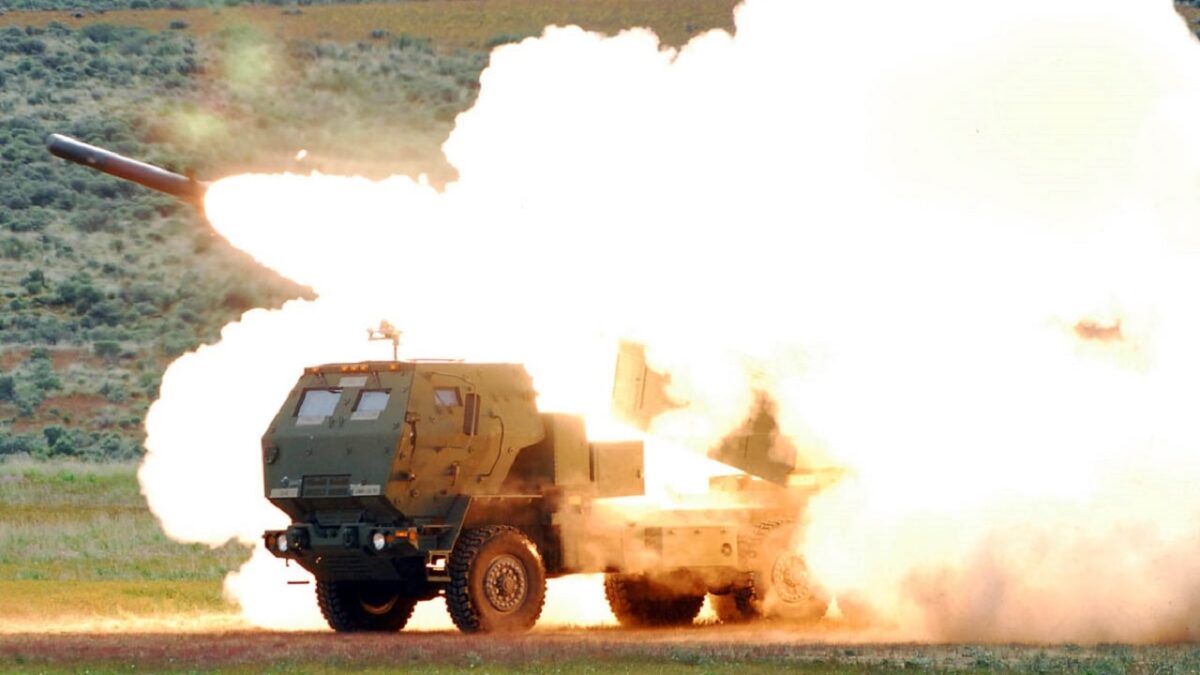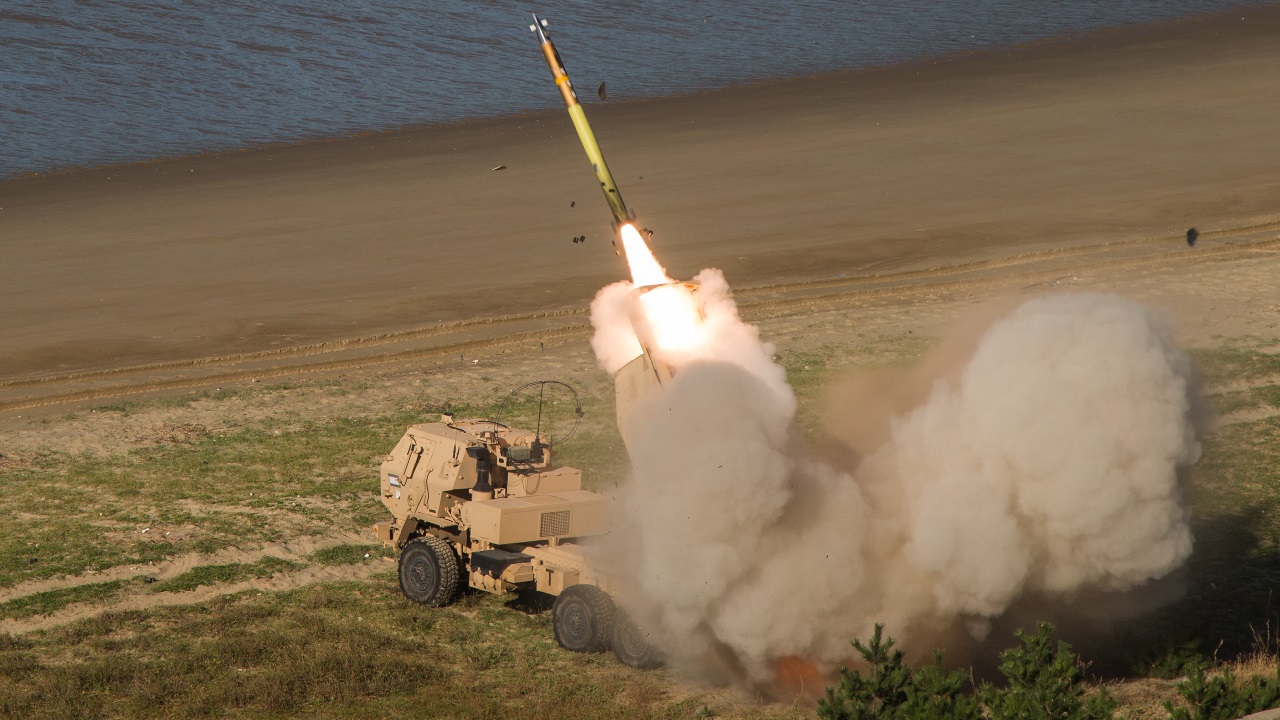Russian Response to the Introduction of HIMARS to Ukraine is Limited, but Frustration Builds – Russian state media has largely remained mute on the subject of Ukraine’s employment of American High Mobility Artillery Rocket Systems (HIMARS) against Moscow’s invasion force. While the various state-friendly corners of Russia’s public sphere have expressed frustration on the subject of Ukrainian HIMARS use, Moscow’s reaction to the HIMARS’ use has been rather muted so far.
What is HIMARS?
Officially designated as the M142 HIMARS, the system consists of a launch pod capable of firing six guided missiles mounted on a truck.
With a range of around 50 miles, the HIMARS system’s main advantage over practically every other type of artillery on the field today is that its range allows it to strike depots and command centers far behind enemy lines or enemy artillery batteries without risking itself to counterfire.
The Biden administration only provided Ukraine with its initial batch of four HIMARS weapons after Kyiv assured Washington that it would not use its HIMARS to strike targets within Russia, calming American fears of escalation.
On July 8, the Biden administration announced that four additional HIMARS launchers would be sent to Ukraine, joining the eight total which had been sent to date.
How Has Ukraine Been Using its HIMARS?
While Russian forces in Ukraine enjoy a steep advantage in raw numbers of long range fires in Donbas, which form a central part of Russia’s military strategy at this stage of its invasion, Ukraine’s use of HIMARS has given the Ukrainian Armed Forces a set of advantages of their own.
After becoming acquainted with the system, Ukraine’s armed forces have become adept at striking Russian ammunition depots and command centers located far behind its front lines with accuracy.
With its successful employment of the HIMARS system now clear, Ukrainian officials have continued to express gratitude to the U.S. and lobby for additional HIMARS deliveries, claiming that they would facilitate Ukrainian counterattacks and attempts to expel Russian troops from the country.
How Has the Russian Military and Media Reacted?
Moscow and Russian media sources have either sought to obfuscate the effectiveness of HIMARS on the battlefields of Ukraine or have expressed rising worry and dismay at the effects of Russian strikes.
Russia’s Defense Ministry attempted to maintain a positive narrative on Ukraine’s possession of HIMARS, only mentioning the HIMARS to claim on July 6 that the Russian armed forces had destroyed two Ukrainian HIMARS examples, an assertion which was denied by both Ukraine and the United States.
Taking a different approach, noted Russian nationalist, former FSB Colonel, and accused war criminal Igor Girkin as well as Rusian state media journalists have bemoaned the position of Russian forces under fire by Ukrainian HIMARS which they have no defense or recourse against.
Russian state media has also dubiously claimed that Ukraine has used its HIMARS to intentionally conduct strikes upon civilian population centers in areas of Ukraine occupied by Russia.
Magnifying such claims, Russian Duma Deputy (and former Russian spy n the U.S.) Maria Butina has also publicly magnified allegations that Ukrainian HIMARS were used to strike civilian infrastructure and demanded that the U.S. stop supplying Ukraine with the system accordingly.

M142 HIMARS. Image Credit: Creative Commons.
What Happens if HIMARS are Used Offensively Against Russia?
While Ukraine’s utilization of HIMARS have undoubtedly been highly disruptive to Russian operations, Ukraine continues to hold off on striking targets within Russia in accordance with its promise to Washington. For now, the basis of Russia’s response to Ukrainian HIMARS strikes has been rhetorical posturing and expressing discontent with alleged U.S. provocations in providing the weapon to Ukraine.
If Ukraine were to strike targets located within Russia’s borders in the future, Kyiv would risk incurring the ire of the U.S. in exchange for short-term tactical payouts. Such strikes could also complicate the domestic political picture created by Moscow that its invasion of Ukraine does not affect Russia directly, thereby putting additional pressure on Russian President Vladimir Putin’s public conception of the war as a limited “special military operation,” potentially rousing Russian public interest in the war again (for better or for worse for Ukraine).
For now, Ukraine’s HIMARS has proved to be potent weapons for harrying Russia’s logistics and command systems supporting its invasion of Ukraine. More time is needed to evaluate their actual effect on Russian operations, and to see if Ukraine will continue to opt against strikes on targets inside of Russia.
Wesley Culp is a Research Fellow at the Center for the Study of the Presidency and Congress. He regularly writes on Russian and Eurasian leadership and national security topics and has been published in The Hill as well as in the Diplomatic Courier. He can be found on Twitter @WesleyJCulp.

